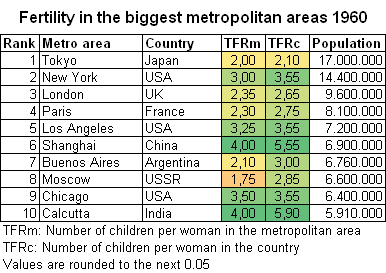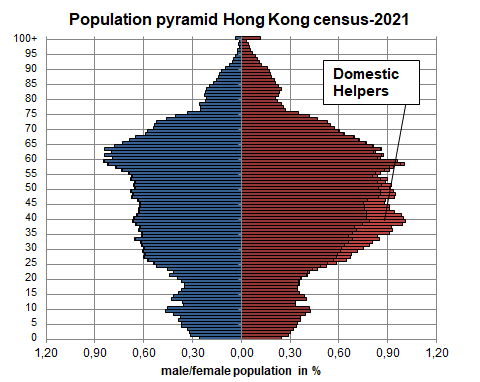The Birth Gauge: Decoding Global Fertility Trends And Their Profound Impact
In an increasingly interconnected world, understanding the intricate dynamics of global populations is more critical than ever. Birth rates, fertility trends, and demographic shifts are not just abstract numbers; they are powerful indicators that shape economies, societies, and even the very fabric of our future. Amidst this complex landscape, a significant voice emerges, often through platforms like Twitter, known as "Birth Gauge." While a direct, formal description might be elusive—as one snippet of data frustratingly notes, "We would like to show you a description here but the site won’t allow us."—the essence of Birth Gauge is clear: it's a dedicated observer and commentator on the world's most vital demographic shifts, particularly focusing on fertility rates.
This blog post will delve into what Birth Gauge represents, the crucial data points it highlights, the underlying factors it explores, and why its insights are indispensable for anyone seeking to comprehend the trajectory of human civilization.
What is "Birth Gauge"? A Window into Demographic Realities
At its core, "Birth Gauge" (often identified by its Twitter handle, @BirthGauge) functions as a vital hub for demographic analysis. It's not merely a reporter of statistics; it's a platform that engages in nuanced discussions about the Total Fertility Rate (TFR) – the average number of children a woman is expected to have over her lifetime – and broader birth trends across the globe. Through its observations and commentary, Birth Gauge provides a lens through which we can perceive the subtle, yet profound, shifts occurring in human reproduction.
- Summer Cute Hairstyles
- How To Make Blonde Hair Darker
- How To Tone Down Brassy Highlights
- Hot Towel Treatment
- June 14th Horoscope
The discussions facilitated by Birth Gauge often involve deep dives into specific regional data, comparisons between different countries and ethnic groups, and explorations of the socio-economic and even biological factors that influence fertility. It acts as a digital town square for demographers, policymakers, and interested citizens to share, analyze, and debate the implications of these vital statistics.
The Critical Data Points Birth Gauge Explores
Birth Gauge consistently brings attention to stark realities and emerging patterns in global birth rates. The data it references paints a compelling picture of a world grappling with declining fertility, though with significant regional variations.
Global Fertility Declines: A Widespread Phenomenon
One of the most recurring themes in Birth Gauge's observations is the pervasive decline in birth rates across many nations. This isn't just a statistical blip; it's a sustained trend with far-reaching consequences:
- Best Shows From The 2000s
- Unicorn Makeup For Halloween
- Frizzy Hair Hair Mask
- Does Sofia Vergara Have Fake Boobs
- Fun Color Hair Ideas
- China's Steep Descent: As noted by one piece of data, there has been a "Huge decline in the number of births starting 5 years ago" in China. This dramatic shift in the world's most populous nation has significant global implications, impacting everything from future workforce demographics to consumer markets.
- Poland's Challenges: The data highlights that "In the first half of 2022, there were 154,000 births in Poland, 7.2% less than 2021." While this represented "a slight recovery compared to Jan-Apr, when the decline still stood at almost 10%," it underscores the persistent downward pressure on birth rates even in European nations.
- Germany's Clearer Picture: Birth Gauge also emphasizes the importance of accurate data comparison, noting that for Germany, "one needs to compare preliminary to preliminary figures" to get a true understanding of the trends. This highlights the rigorous approach to data analysis that underpins its insights.
Regional and Ethnic Specifics: Nuances in Fertility
Beyond broad national trends, Birth Gauge meticulously examines fertility rates at more granular levels, revealing fascinating and often concerning specificities:
- Uyghurs and Lowest TFR: A particularly striking observation shared by @BirthGauge is that "Uyghurs are now the Muslim ethnicity with the lowest TFR on Earth (likely 1.0 or so), lower than Bosniaks, Gilaks." This highlights how specific ethnic groups can experience unique demographic pressures, which can be influenced by a myriad of factors, including socio-political circumstances.
- Argentina's Varied Landscape: The data illustrates significant internal variations within countries, as seen in Argentina: "It ranged between 1.25 in the city of Buenos Aires and 1.36 in Tierra del Fuego to 1.93 in Formosa and 2.08 in Mendoza." Such disparities underscore the localized influences on fertility, from urban living costs to rural economic opportunities.
Beyond the Numbers: Factors Influencing Fertility
Birth Gauge doesn't just present numbers; it provokes thought about the complex factors that drive these demographic shifts. The discussions it engages in often delve into socio-economic conditions, policy implications, and even more speculative, yet intriguing, biological considerations.
Socio-Economic Factors and Policy Debates
One compelling example of Birth Gauge's analytical depth comes from a discussion about Hong Kong's fertility rates: "I wonder how deep fertility rates in HK would crash if domestic helpers got a decent wage instead of the pittance they get now." This statement encapsulates a critical aspect of modern fertility debates: the interplay between economic conditions, social support structures, and individual choices regarding family size. Factors like the cost of raising children, access to affordable childcare, housing prices, and even the availability and compensation of domestic help can profoundly influence a couple's decision to have children, or how many. High living costs and inadequate support systems in many developed and rapidly developing economies are frequently cited as deterrents to higher birth rates.
The Heritability Debate: A More Complex Layer
Adding another layer of complexity to the discussion, Birth Gauge also touches upon more theoretical aspects, such as the concept of heritability in relation to fertility. The data includes a reference to assuming "a heritability of 0.3" and presenting results for "children per generation" in various countries:
- Finland: +0.32 children per generation
- Canada: +0.27
- USA: +0.27
- Japan: +0.27
- Germany: +0.26
- UK: +0.25
- Spain: +0.25
This points to a fascinating, albeit controversial, area of demographic research that explores whether certain traits or predispositions related to fertility might be passed down genetically. While this is a highly specialized and debated field, its inclusion in Birth Gauge's discussions demonstrates its willingness to explore the full spectrum of factors that could influence population dynamics, from immediate socio-economic pressures to long-term biological predispositions.
Why Does "Birth Gauge" Matter?
The work of Birth Gauge, whether as a specific entity or a collective analytical approach, is profoundly important for several reasons:
- Informing Policy: Accurate and timely demographic data is essential for governments to plan for the future. Declining birth rates impact everything from pension systems and healthcare demands to workforce availability and economic growth. Understanding these trends allows for proactive policy development.
- Raising Awareness: Many people are unaware of the dramatic shifts occurring in global populations. Birth Gauge helps to bring these critical issues into public discourse, fostering greater understanding and encouraging necessary conversations.
- Highlighting Disparities: By focusing on regional and ethnic specifics, Birth Gauge sheds light on how demographic trends can disproportionately affect different communities, urging a more nuanced approach to social and economic planning.
- Encouraging Deeper Analysis: The discussions around socio-economic factors and even heritability push for a more comprehensive understanding of fertility, moving beyond simple statistics to explore the root causes and potential solutions.
Final Thoughts: The Unfolding Human Story
In essence, "Birth Gauge" serves as a crucial instrument for measuring the pulse of humanity's future. Through its consistent focus on Total Fertility Rates, its meticulous examination of diverse data points from Argentina to China, and its willingness to explore complex influencing factors like wages and heritability, it provides invaluable insights into the unfolding human story. The trends it highlights—from declining birth rates in Poland to the unique demographic challenges faced by Uyghurs—are not just numbers; they represent fundamental shifts that will define the societies of tomorrow. Monitoring these trends, understanding their causes, and preparing for their consequences is paramount, making the insights offered by entities like Birth Gauge indispensable in our collective journey forward.
Article Recommendations
- How To Make Blonde Hair Darker
- Caramel Balayge
- Quincecoupon Code
- Megan Thee Stallion Hands
- Curtain Bangs



Detail Author:
- Name : Ebony Becker
- Username : whegmann
- Email : hkoepp@gaylord.com
- Birthdate : 1977-05-22
- Address : 714 Zula Passage Luettgenbury, NC 15846
- Phone : 469.968.3572
- Company : Aufderhar Inc
- Job : Bill and Account Collector
- Bio : Ut eos et possimus aliquam non officiis. Possimus velit dolorum nulla et quisquam. Sit esse porro repudiandae consequatur et. Alias reiciendis molestias officiis rem quasi.
Socials
twitter:
- url : https://twitter.com/aborer
- username : aborer
- bio : Et quisquam deleniti quia ab tenetur delectus. Asperiores eum dolor aut beatae cupiditate. Nihil consequuntur et in vitae deleniti vero placeat.
- followers : 1012
- following : 1669
linkedin:
- url : https://linkedin.com/in/adriana_official
- username : adriana_official
- bio : Sunt quia mollitia quaerat delectus et fuga id.
- followers : 5118
- following : 2442
tiktok:
- url : https://tiktok.com/@adriana.borer
- username : adriana.borer
- bio : Fuga ullam fugit repellendus perspiciatis inventore.
- followers : 3404
- following : 1051